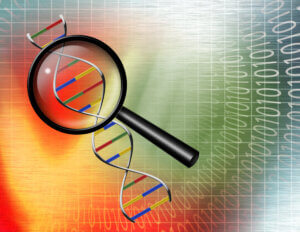04 Nov What are Channelopathies?

With the advent of molecular autopsy, also known as postmortem genetic testing, research has begun to link sudden deaths to several genetic causes, including channelopathies that alter heart functions.1 Channelopathies, either genetic or acquired, include a wide array of diseases that result from malfunctioning ion channels and associated proteins in the body. The body relies on these ion channels and proteins to function properly—they allow nerves to conduct electrical signals, the heart to beat and pump blood, the muscles to contract and relax, and much more. Damage to any of these ion channels and related proteins understandably leads to defects in their respective functions.2
Although channelopathies may occur in any part of the body, cardiac channelopathies are particularly lethal because of the role that ion channels play in the heart. A normal heartbeat depends on the right balance of ions flowing in and out of the ion channels in heart cells.3 If the balance is upset by dysfunctional ion channels, then arrhythmias, described as improper or abnormal beating of the heart, may occur and lead to sudden death.4–8
Cardiac channelopathies are generally genetic and may either be caused by de novo (spontaneous, non-hereditary) or inherited gene variants, which are different versions of the genes that code for these cardiac ion channels. Due to their inheritability, it is critical that examiners investigating a sudden death review the person’s complete personal and family history, as there may be clues that point toward a genetic cause of death:
- Family history of premature sudden death before 50 years old
- Drowning in shallow water or drowning of an accomplished/unimpaired swimmer
- Congenital heart disease
- Personal or family history of syncope, arrhythmia, heart failure, and/or seizures
It is also important to note that the absence of these clues do not rule out a cardiac channelopathy either.9
Common cardiac channelopathies observed in sudden unexpected deaths include long QT syndrome (LQTS), short QT syndrome (SQTS), Brugada syndrome (BrS), and catecholaminergic polymorphic ventricular tachycardia (CPVT). These common cardiac channelopathies have been identified in approximately 25-35% of autopsy-negative sudden unexplained deaths in the young (children and adults < 50 years old) and approximately 10% of SIDS cases (< 1 year old).10 Additionally, cardiac channelopathies are insidious—death was the first symptom in as many as 10-15% of individuals who died from long QT syndrome with the cause not being identified until the postmortem genetic investigation was performed.11 Although there is limited research on channelopathies in sudden unexplained death in toddlers (1-5 years old), the present association between cardiac channelopathies and sudden unexpected deaths warrant a streamlined postmortem genetic testing protocol for autopsy-negative sudden unexplained deaths.
In the case of a sudden pediatric death for which no apparent cause has been identified, the National Association of Medical Examiners (NAME) Panel on Unexpected Deaths in Pediatrics recommend retaining viable genetic specimens at the time of autopsy for a comprehensive or targeted channelopathy and arrhythmia screening that may shed light on the cause of sudden death, aid in identifying at-risk relatives, and confirm familial risk of an explained cause of death.12,13 If the decedent also has a history of febrile seizures and/or has a relative with epilepsy, an additional epilepsy panel should also be run, as arrhythmias may also present as syncope. If a pathogenic (disease causing) variant in a channelopathy gene has been identified in the decedent, it is then recommended for families to work with the examiner, primary care physician, and genetic counselor to facilitate appropriate variant-specific testing in family members and relatives in order to develop appropriate care for them. If the panels do not yield any result, then whole exome sequencing (WES) may be recommended for the child who died and both parents.9
As cardiac channelopathies continue to be linked to some sudden unexplained deaths, it is recommended that medical examiners/coroners retain whole blood in EDTA for all autopsy-negative cases. Genetic testing is available to the general public through commercial testing as well as research options, including the SUDC Registry and Research Collaborative at NYU Langone Health. Molecular technology and postmortem genetic research continue to improve, as such, recommendations are anticipated to continue to evolve.
- Ackerman MJ, Tester DJ, Driscoll DJ. Molecular autopsy of sudden unexplained death in the young. Am J Forensic Med Pathol. 2001;22(2):105-111. doi:10.1097/00000433-200106000-00001
- Kass RS. The channelopathies: novel insights into molecular and genetic mechanisms of human disease. J Clin Invest. 2005;115(8):1986-1989. doi:10.1172/JCI26011
- Kim J-B. Channelopathies. Korean J Pediatr. 2014;57(1):1-18. doi:10.3345/kjp.2014.57.1.
- Neubauer J, Haas C, Bartsch C, Medeiros-Domingo A, Berger W. Post-mortem whole-exome sequencing (WES) with a focus on cardiac disease-associated genes in five young sudden unexplained death (SUD) cases. Int J Legal Med. 2016;130(4):1011-1021. doi:10.1007/s00414-016-1317-4
- Tester DJ, Wong LCH, Chanana P, et al. Cardiac Genetic Predisposition in Sudden Infant Death Syndrome. J Am Coll Cardiol. 2018;71(11):1217-1227. doi:10.1016/J.JACC.2018.01.030
- Tester DJ, Medeiros-Domingo A, Will ML, Haglund CM, Ackerman MJ. Cardiac Channel Molecular Autopsy: Insights From 173 Consecutive Cases of Autopsy-Negative Sudden Unexplained Death Referred for Postmortem Genetic Testing. Mayo Clin Proc. 2012;87(6):524. doi:10.1016/J.MAYOCP.2012.02.017
- Narula N, Tester DJ, Paulmichl A, Maleszewski JJ, Ackerman MJ. Post-mortem Whole exome sequencing with gene-specific analysis for autopsy-negative sudden unexplained death in the young: a case series. Pediatr Cardiol. 2015;36(4):768-778. doi:10.1007/s00246-014-1082-4
- Baruteau A-E, Tester DJ, Kapplinger JD, Ackerman MJ, Behr ER. Sudden infant death syndrome and inherited cardiac conditions. Nat Rev Cardiol. 2017;14(12):715-726. doi:10.1038/nrcardio.2017.129
- Deaths NA of MEPOSP. Unexplained Pediatric Deaths: Investigation, Certification, and Family Needs. (Bundock EA, Corey TS, eds.). Academic Forensic Pathology International; 2019.
- Ackerman MJ. State of postmortem genetic testing known as the cardiac channel molecular autopsy in the forensic evaluation of unexplained sudden cardiac death in the young. Pacing Clin Electrophysiol. 2009;32 Suppl 2(Suppl 2):S86-9. doi:10.1111/j.1540-8159.2009.02393.x
- Alders M, Bikker H, Christiaans I. Long QT Syndrome. University of Washington, Seattle; 1993. http://www.ncbi.nlm.nih.gov/pubmed/20301308. Accessed July 13, 2021.
- Middleton O, Atherton D, Bundock E, et al. National Association of Medical Examiners position paper: Recommendations for the investigation and certification of deaths in people with epilepsy. Epilepsia. 2018;59(3):530-543. doi:10.1111/epi.14030
- Ackerman MJ, Priori SG, Willems S, et al. HRS/EHRA Expert Consensus Statement on the State of Genetic Testing for the Channelopathies and Cardiomyopathies: This document was developed as a partnership between the Heart Rhythm Society (HRS) and the European Heart Rhythm Association (EHRA). Europace. 2011;13(8):1077-1109. doi:10.1093/europace/eur245


